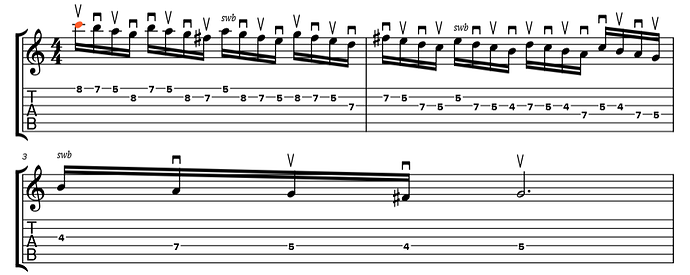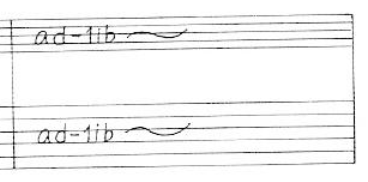Well, a transcription is simply a reference point - it’s always been just one person’s interpretation of “how” a line is played. Certainly there is going to be things that just won’t work for everyone.
I personally have long, long, LONG since given up on practicing things like this that are, umm… “in position” as a speed development thing because for me personally ( I can’t speak for you - I barely know myself… lol) ascending 4’s like this is kind of a nightmare for me, and trust me I have practiced the. crap. out of it every which way to Sunday and have have come to the following conclusions;
-
No two players play the same way exactly. We all have different proclivities, strengths and weaknesses.
-
Note arrangement is the choice of the player. (That means that I get to arrange things to suit me, I don’t give a shit about how the transcription looks vs how I play it. Am I playing the right notes? Am I getting the sound I want? Will the time that I am going to invest in this yield results efficiently?)
Playing Ascending 4’s And Descending 4’s is inefficient for me because a) I have an Elbow mechanic and a single escape technique - usually a DSX. So the problem for me is uneven number of notes per string vs rhythmic groove. Now, I have tried to develop a DBX or a 2way pickslanting thing with mixed/non-existent results. Really, it’s a lot more efficient for me to come up with a way to play what it is I want to play using the technique I have available. THAT is what I have learned from this site and Troy’s videos.
Anyways, as per the included graphic I have 2 ways that I can successfully play ascending 4’s.
-
- Play it on a single string. Yngwie does that all the time. Good enough for him, good enough for me. String changes seem to be where the hiccups happen, so I just take 'em out of the equation.
-
- A mixed bag of hybrid, economy and alternate picking. This way takes advantage of the stupid RH finger that’s just hanging out there ready to hit a note after an upstroke with the pick…
Anyways, maybe tablature is part of the problem? Position playing and reading studies perhaps…? Then again reading studies aren’t really about super-speed, are they? I don’t know. All I know is my own experiences. But I do know this; there are about 50 books with variations of ascending 4’s in it played the same way (in position) and not one of them tells you what to do when you just can’t play it past 130bpm.
(easy answer - just do something else!)







